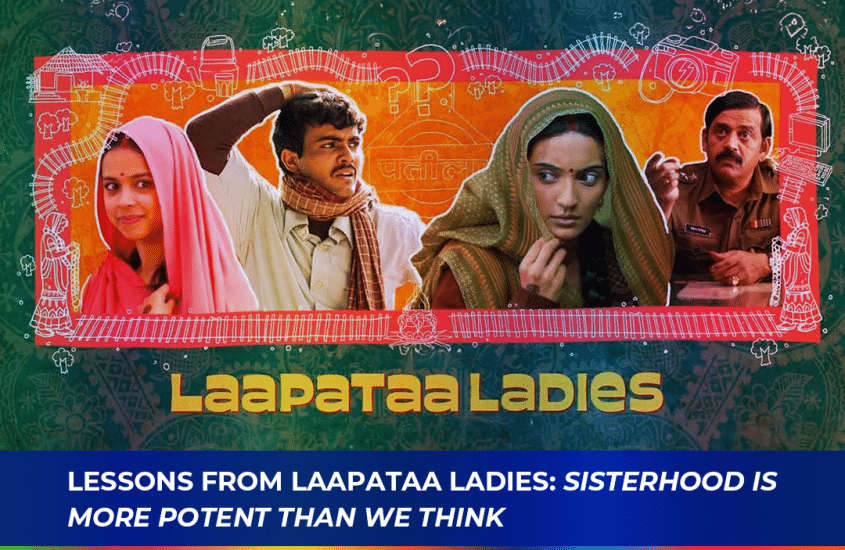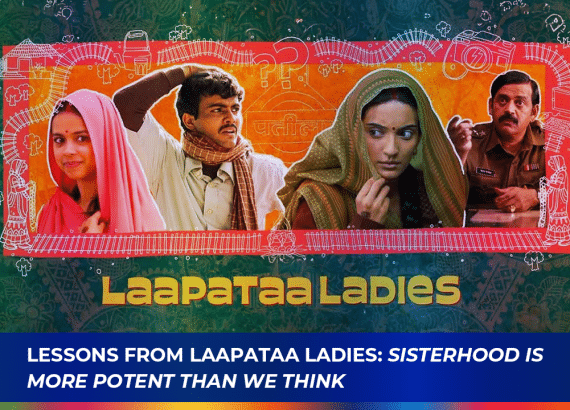Lessons from Laapataa Ladies: Sisterhood is more potent than we think

by Janani Sampath
Segue Sessions 2024, the annual conference conducted by Avtar for women, had a riveting session comprising Dr. Saundarya Rajesh, Founder-President, Avtar, and Geetha Ramamoorthi, MD, KBR India. During their keynote conversation, Geetha made a point that left me contemplating it for many days. She said women helping other women rise and the power of sisterhood weren’t celebrated. While the thought excited me, I wanted to visualize it. What would it be like in organizations, homes, and our societies? A vignette of scenarios appeared, but I couldn’t picture it.
Tropes on the small screen like catfights and the tussle between mothers-in-law and daughters-in-law have made me pessimistic about seeking references in the media.
However, last week, when I watched Kiran Rao’s Laapataa Ladies, I precisely knew what she meant. Set in the new millennium, the story follows the lives of two newly-wed women– Phool and Jaya. During a train trip in the hinterland of the Hindi belt (a freshly-bifurcated state of Madhya Pradesh), both lose their way to their new homes, thanks to the ghunghat (veil).
Amid the mistaken identities and the search for the lost bride by a distraught husband, the travails unravel the many aspects of life exclusive to women. Women are lost socially, even as they are prepared to meet societal expectations all their lives. How does being adept only at chores like cooking, sewing, and attending to the household help when a woman can’t find her way back home? Does caring for loved ones always have to be at the expense of sacrificing desires and dreams for them? And more importantly, can two women brought together by circumstances and most often sailing in the same boat be friends? Can they cheer for each other, help each other find their spark, and celebrate their moments of triumph?
Peppered with interesting characters, the film breaks several molds. An aged Manju Mai holds the mirror to Phool’s unpardonable naiveté but is quick to open her humble abode and food stall to support her. Deepak (Phool’s husband), driven by guilt, is determined to find his wife, even if it means spending all he has.
Laapataa Ladies is an ode to the spirit of womanhood and the men who want equals as spouses, not subordinates. There are strong women and vulnerable men unafraid to love with their hearts, and they aren’t at loggerheads.
In the decrepit towns with few opportunities that force migration of men, joint families with limited means survive because the women have taken up the mantle to keep them together. Jaya and Phool belong to those families, shaped by the odds they beat when their lives veer into unforeseen territories. They realize that meekness comes at the cost of dreams and that staying domesticated is futile as you have to encounter the world you stay sheltered from.
Spurred by epiphanies, Jaya is relentless about realizing her dream to study, while Phool has unwavering faith about reuniting with her husband soon. While their dreams differ, they are strung by the same thread– the will to decide their destinies and learn from adversities.
They are at the two ends of the trail of sisterhood, brought together by an otherwise uneventful train trip that could have led them to settle for moribund lives centered around chores, caregiving and more sacrifices.
Laapataa Ladies finds its mojo in the desultory steps of women, who one day choose to own their journeys.
*A former journalist with close to 15 years of experience in the field, Janani is senior manager, MarCom, Avtar.







